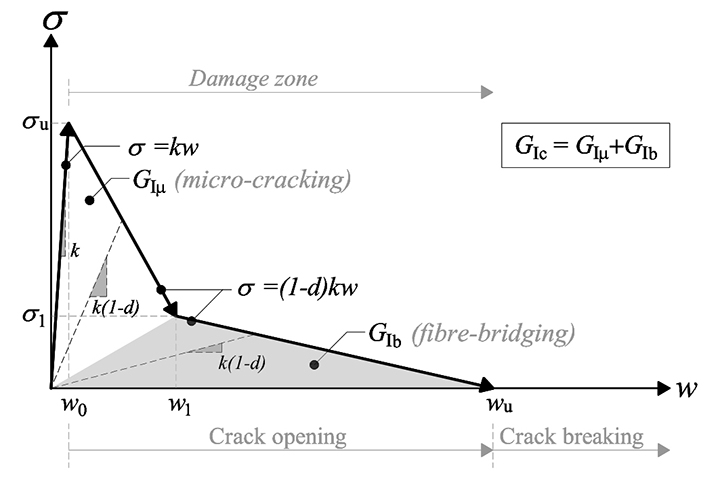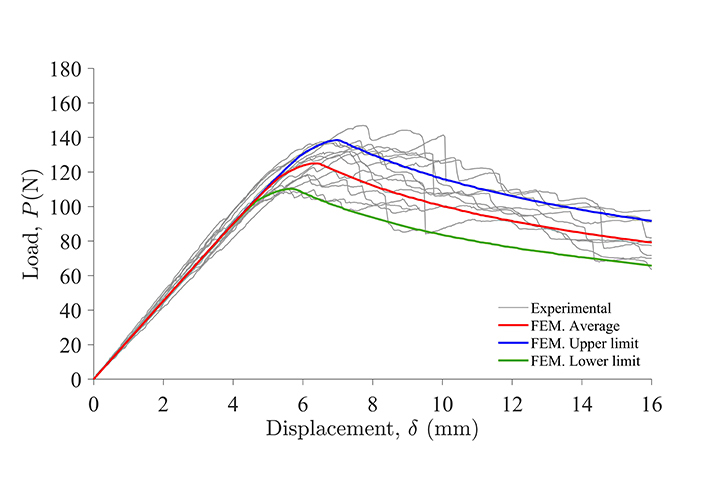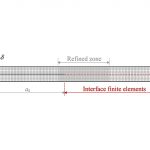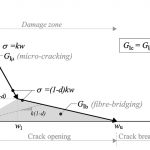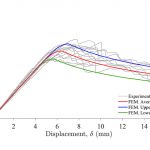Abstract
This work addresses the determination of the cohesive laws in Mode I and tangential-longitudinal (TL) propagation system of Fagus Sylvatica L. This species is one of the ever-growing and most widely used hardwood species in Europe for engineered timber products. Double Cantilever Beam (DCB) tests are performed. The strain energy release rate () is derived from the R-curves by applying the Compliance-Based Beam Method (CBBM), which has the advantage of not requiring the measurement of the crack length during propagation, but only the global load–displacement curves. The cohesive law of the material is determined from the relationship between , and the crack tip opening displacement (CTOD) monitored for each specimen using Digital Image Correlation (DIC). Numerical finite element models are developed by implementing the average cohesive law through Cohesive Zone Models (CZM). An average value of 0.46 is obtained for this species. The numerical load–displacement curves are consistent with the experimental results, which demonstrates the suitability of the method for the identification of the cohesive laws in beech. The fracture properties obtained are essential in the development of advanced and reliable numerical models in timber engineering design using this species.
https://doi.org/10.1016/j.tafmec.2021.103220


